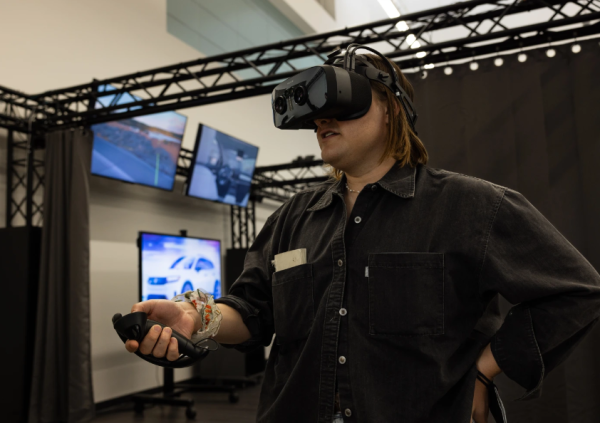
Honda is Using Virtual Reality to Design Cars
Honda wants to increasingly use virtual reality to design cars. Some of the company’s upcoming cars have already been designed entirely in virtual reality without relying on conventional physical prototypes although employees have mixed feelings about it. The company to pursue a hybrid approach that incorporates virtual reality into the workflow while also retaining the “human touch” that designers have been accustomed to for decades.
Like other automakers, Honda still largely uses life-size clay models for the evaluation of its designs. The use of clay models in automotive design was pioneered by General Motors’ designer Early Earl and is a standard industry practice to date.

However, Honda revealed that it is relying less on clay models. The shift began with the Coronavirus pandemic that raged on through 2020 and 2021 and curtailed physical contact, forcing many companies to shift to remote working. For Honda, these restrictions practically split its teams spread across Ohio, Los Angeles, and Japan.
Honda revealed that travel restrictions at the height of the pandemic inhibited the ability of its teams to collaborate with engineers on the 2024 Honda Prologue thereby forcing the company to innovate and start embracing virtual reality design.
Honda’s vehicle design workflow now entails the replacement of the conventional full-size clay models with an immersive vehicle in virtual reality. To realise this goal, Honda opened the first two VR-focused studios by July 2020. One studio was located in Tokyo and the other in Torrance, California. These studios allowed for the passing of feedback on the iterations of exteriors and interiors without the parties being physically present in the same location.
Honda now says that those designs that were reviewed in virtual reality in 2020 are already coming off the assembly lines including the 2024 Honda Prologue and the Honda Pilot TrailSport 2023.
The company says it is able to mature its designs within a shorter timeframe after incorporating virtual reality into its workflow.
Honda says the virtual reality headsets meant its designers traveled less and easily collaborated remotely in virtual reality resulting in time and cost savings although it didn’t state whether these cost savings could be passed down to consumers.
VR Design Increases Efficiency
Honda says VR design has added efficiencies to the car design process including time savings thanks to faster iterations, reduction in waste, and reduced carbon footprint from the reduced need to travel for design reviews.
However, it has not been all smooth sailing with the gradual shift toward VR design. After all, old habits die hard. Some Honda employees are finding it difficult to transition from the old ways of doing things into the immersive environment. This is particularly challenging when it comes to the vehicle interiors. Employees report that haptics makes this a challenge for car designers.
Overall, Honda says the benefits of VR car design outweigh its demerits. According to the company, VR prototyping has eliminated limitations linked to interior design and enabled the company to address feedback much faster. It has also enabled the company’s designers spread across the globe to collaborate cohesively among the various design teams including materials, colour, HMI, and finishes.
However, Honda says it is not going fully immersive as it doesn’t want its designers to lose the emotion and human touch they pour into their work and will, therefore, pursue a hybrid approach. Some Honda staffers told TechCrunch that they loved touching and feeling things and that virtual reality design was a bit of a departure for them. Some reported that virtual reality evaluations were “hard to accept sometimes.”
The company will continue exploring the technical possibilities of virtual reality and augmented reality design at its development centres in various cities across the globe to help it improve the appeal and quality of its products.
The Honda and Bugatti experiments in virtual reality design show that VR could, in the future, be a key element in 3D design and training in companies. Several companies are already successfully integrating these immersive technologies into their workflows.
Credit: https://virtualrealitytimes.com/2023/04/23/honda-is-using-virtual-reality-to-design-cars/?utm_source=rss&utm_medium=rss&utm_campaign=honda-is-using-virtual-reality-to-design-cars

